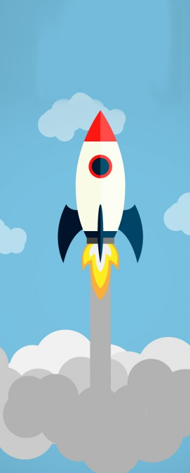Statewise Prepration
Govt. Examwise MCQ
2905+ MCQ Questions in english हिन्दी
Which process involves the conversion of glucose to energy in cells?
Cellular respiration breaks down glucose to release ATP energy.
Which organ in the human body filters waste from the blood?
Kidneys filter blood, removing urea and excess water as urine.
Which gas is essential for respiration in animals?
Oxygen is required for aerobic respiration to release energy from food..
Which part of the flower becomes the fruit?
After fertilization, the ovary matures into the fruit.
Which blood vessel carries oxygenated blood from the lungs to the heart?
It’s the only vein that carries oxygen-rich blood—from lungs to the left atrium.
What is the pH value of pure water?
Pure water has a neutral pH of 7, meaning it is neither acidic nor basic.
Which hormone regulates blood sugar levels?
Insulin, produced by the pancreas, helps regulate glucose levels in the blood by facilitating its uptake into cells.
Which hormone regulates the metabolism in the human body?
Thyroxine, secreted by the thyroid gland, controls metabolic rate and energy use.
Which vitamin is also known as ascorbic acid?
Vitamin C (ascorbic acid) helps in wound healing, immunity, and iron absorption.
Habitat of an organism refers to:
It's the natural home of an organism.
What is the energy currency of the cell?
ATP stores and transports chemical energy in cells.
Study of fungi is called:
Mycology
. Total number of chromosomes in human body cells is:
Humans have 23 pairs of chromosomes = 46 in total.
Light-sensitive layer of the eye is:
The retina contains photoreceptor cells (rods and cones).
Movement of water through a semi-permeable membrane is called:
Osmosis is passive movement of water across membranes.
The protein found in nails and hair is:
Keratin provides strength and structure to nails and hair.
The genetic material in most organisms is:
DNA carries genetic instructions for development and function.
Which organ helps detoxify harmful substances in the body?
The liver breaks down toxins and drugs in the bloodstream.
The main function of red blood cells (RBCs) is:
RBCs contain hemoglobin which carries oxygen from lungs to tissues.
. Which organisms fix nitrogen in the soil?
Rhizobium bacteria live in root nodules of legumes and fix atmospheric nitrogen.
Which enzyme digests protein in the stomach?
Pepsin is secreted by the stomach and breaks down proteins into peptides.
The malaria parasite is transmitted by:
Female Anopheles mosquitoes transmit Plasmodium during blood meals.
What is the term for animals that eat only plants?
Herbivores feed exclusively on plant material.
DNA replication occurs in which phase of the cell cycle?
S-phase (Synthesis phase) is where DNA is duplicated.
What is the structural and functional unit of the kidney?
Nephron filters blood and forms urine.
Which part of the plant is responsible for photosynthesis?
The leaf contains chloroplasts, which perform photosynthesis.
Which gas is released during photosynthesis?
Plants release oxygen as a by-product of converting CO₂ and water into glucose.
How many chambers are there in the human heart?
The human heart has 2 atria and 2 ventricles for efficient oxygenation and circulation.

.jpg)
.jpg)
.png)
.jpg)
.jpg)

